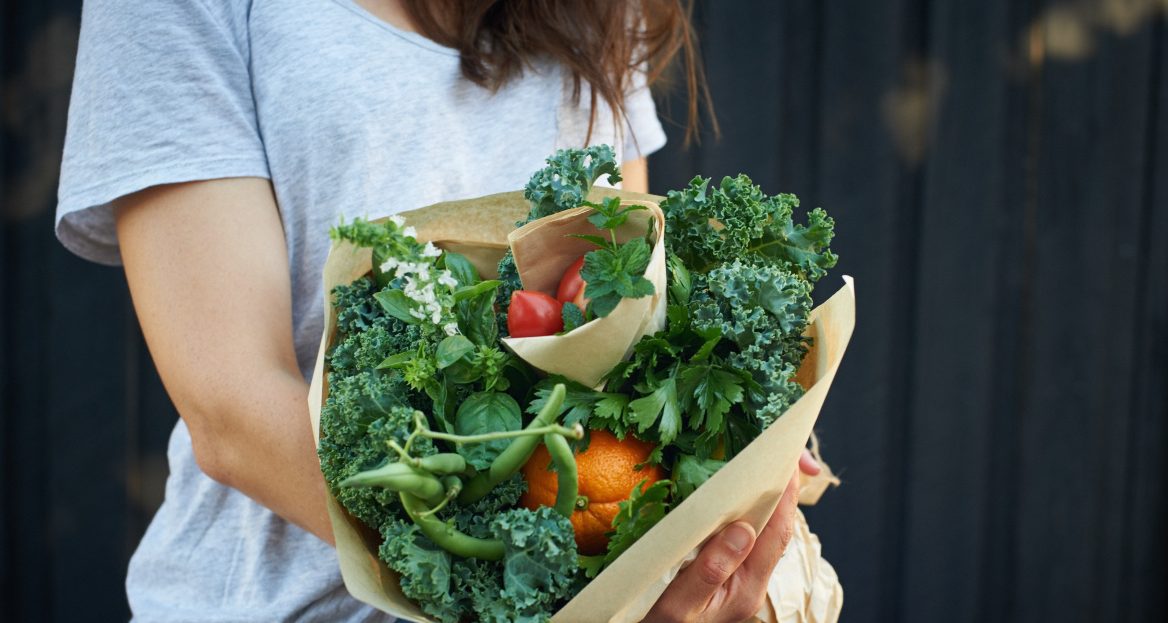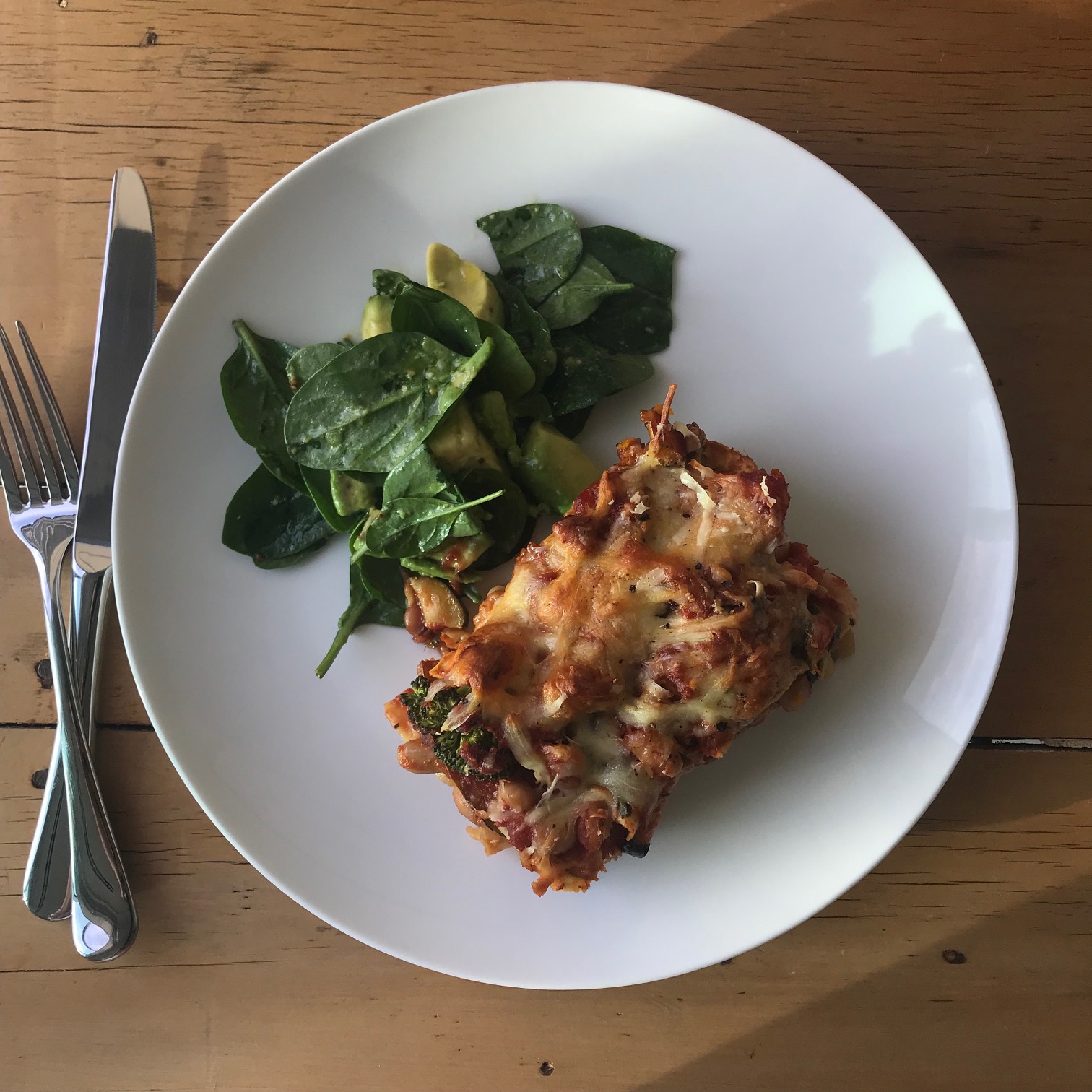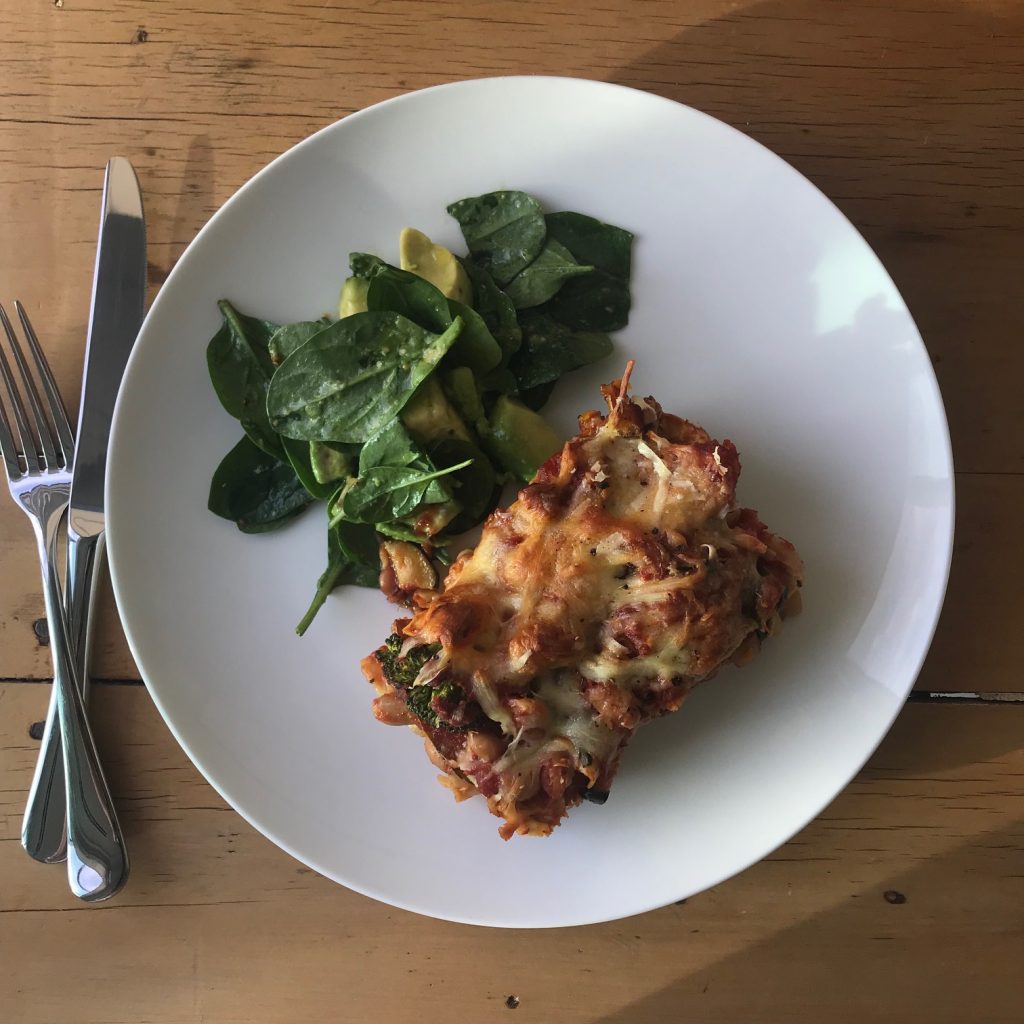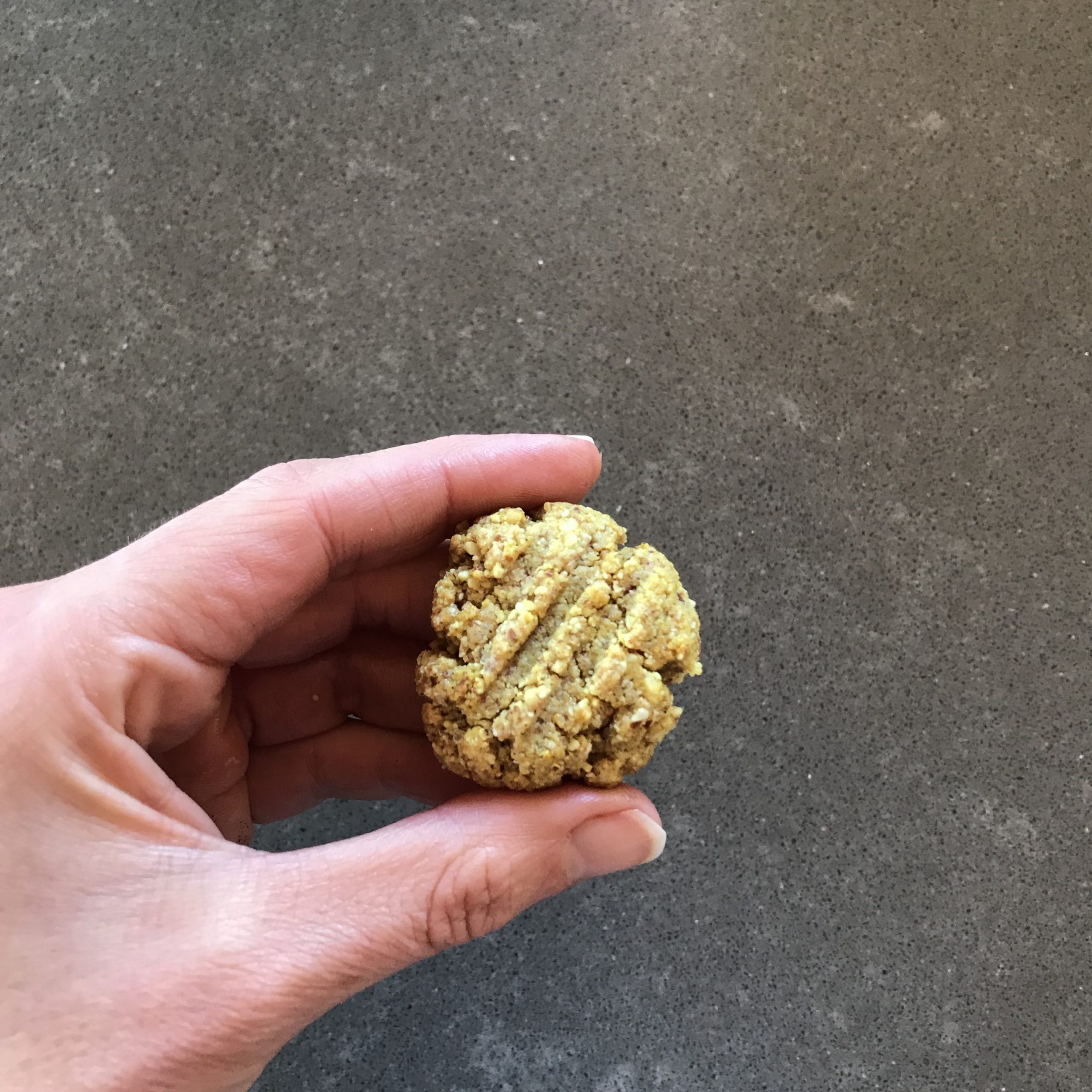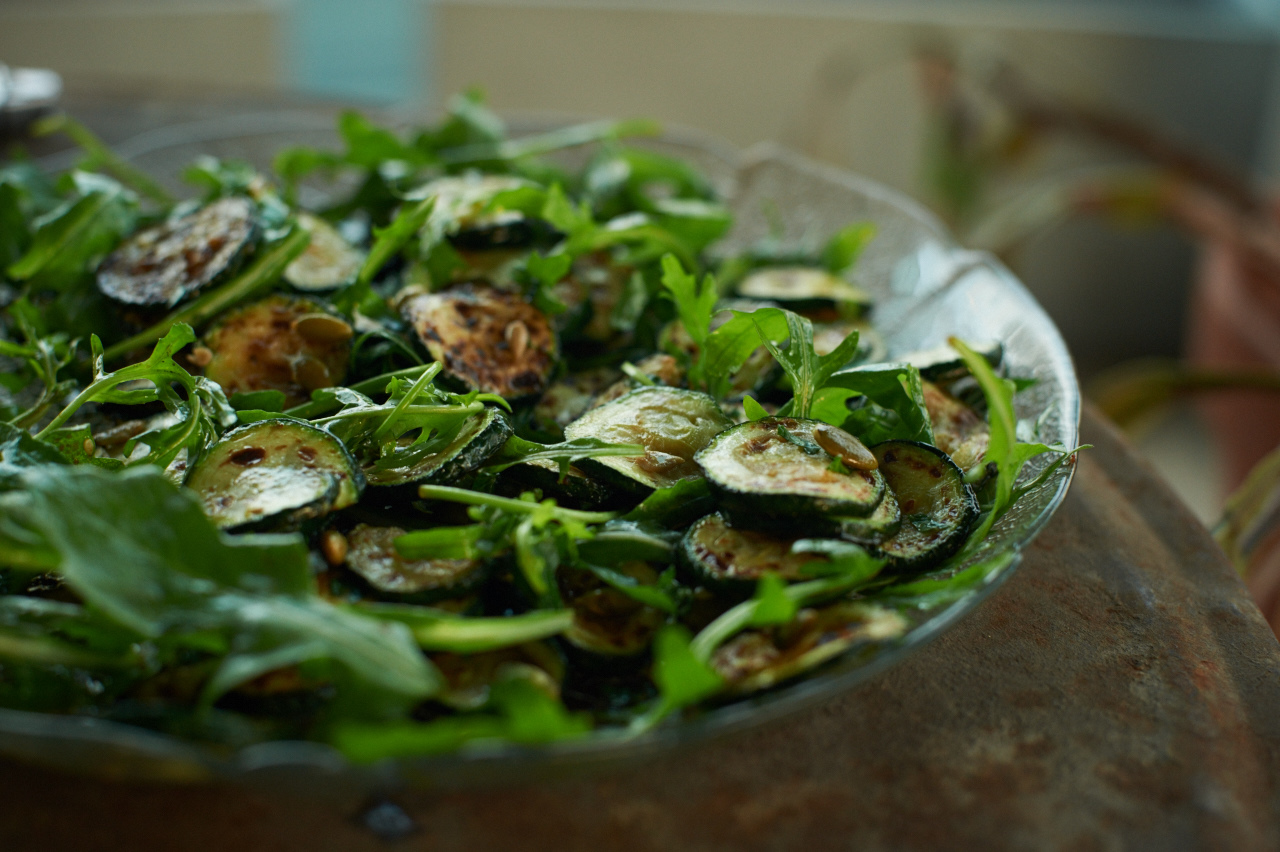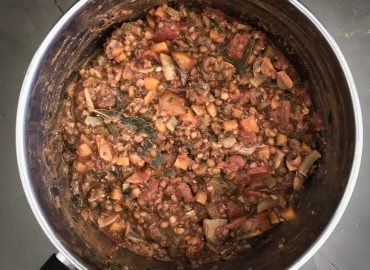I love this lasagne. It’s a heart warming vegetarian meal which is not only tasty but easy to throw together plus a nice way to include more legumes (which are so beneficial for our health). The recipe is flexible so you can use different beans or lentils in the sauce and any vegetables you like (mushrooms, peas, eggplant and capscium all work well). It does take a little more time to prepare than most of my recipes – all up about an hour – but majority of this time is simmering and baking so you can certainly enjoy other activities at the same time, such as watching TV or chatting over the phone (as I often do).
I like to use both fresh ricotta and mozzarella in this lasagne as the combination creates a creamy yet light cheesiness. However, you don’t have to use both, just layers of mozzarella is also delicious.
You need:
- a small baking pan/try or a cake loaf tin
For the sauce:
- 1 tin crushed tomatoes
- 1 tin cannellini beans
- 2 garlic cloves, peeled and chopped
- Chilli flakes
- Oregano (dried or fresh)
- Olive oil
- 1/2 a zucchini, chopped
- A splash of red wine (optional)
- A good handful of baby spinach leaves
For the lasagne :
- Jap pumpkin, cut into slices about 2-3cm thick, for roasting (I like to leave the skin on!)
- ~ 1- 3/4 cup broccoli florets, raw
- Lasagne sheets
- ~ 3/4 cup mozzarella, grated (I often buy bags of grated mozzarella)
- Fresh or smooth ricotta (optional)
- Parmesan, grated (optional) – for the very top
To make:
Preheat oven to 170 degrees Celsius. Place pumpkin on baking paper on a baking tray, add a little salt and pepper and roast until golden and soft.
While the pumpkin cooks, make the sauce. Firstly, add garlic, zucchini, a splash of olive oil, chilli and oregano to a fry pan and sauté on low for about a minute. Then add the tomatoes, a splash of water, salt and pepper and splash of wine and simmer for a few more minutes. Then add cannellini beans and simmer on low for about 10mins, stirring occasionally, until the sauce thickens a little.
While your sauce simmers, get your lasagne pan, cheese, broccoli and lasagne sheets ready. Once the pumpkin is cooked, remove from oven and you are ready to start layering. (At this point lower your oven temperature to 160 degrees Celsius.)
Taste your sauce and season if need. Also add the baby spinach, stir in and turn the heat off once the spinach just begins to wilt.
To assemble lasagne: I like to start with adding a little sauce to the bottom of the pan, then lasagne sheets and then a nice layer of sauce (about 1-2cm), then pumpkin, a few broccoli florets and mozzarella cheese. If using fresh ricotta (which I highly recommend!) add a little ricotta then mozzarella on top. Then start the second layer of lasagne sheets, then sauce, pumpkin and so on. I tend to make 3 layers, then spoon over a little water, I find this helps to cook the pasta sheets if the sauce is quite thick. To finish off add mozzarella and parmesan and a little cracked pepper.
Bake at 160 degrees Celsius for about 30mins, or until the top is golden brown and pasta sheets are al dente.
Remove from oven, cut and serve carefully (as the beans have a tendency to slip out) and serve with a fresh green salad.
I hope you enjoy this! You could easily use different beans or lentils, and/or different vegetables – mushrooms, eggplant, capsicum and peas all work really well. Fresh herbs are also a wonderful addition such as fresh basil leaves and/or parsley.
Lara x
Gestational Diabetes –
If you have GDM lasagne can certainly be a very suitable a nourishing meal. This lasagne contains beans and lasagne (both containing carbohydrate) so for this reason you may need to keep to a moderate slice and serve with a side of extra veg/salad. But, what exactly is a suitable serving size of lasagne for women with GDM varies. An appropriate sized piece depends on how many lasagne sheets you use too. I would suggest using no more than one packet of instant lasagne sheets when making this lasagne, and also using wholemeal pasta if you can. If your BGL management is great a moderate/regular sized piece (a little larger than the one pictured below) should be suitable, served with a side salad. I would suggest avoiding adding bread on the side – check your BGL 2 hours after this meal, depending on your reading you may be able to have a side of bread (next time you have a piece of this lasagne) if you really wanted to. If you’re unsure of what’s best for you in terms of serving suggestions, speak with your Dietitian or reach out to me via email or social media.

